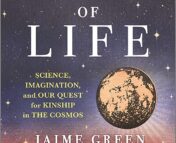
At a certain point when reading A City on Mars I said out loud to myself “I have never seen such a thoroughly researched poop joke”. While the book is full of some of the choice-iest bits of awkward human space exploration histories and theories (ever heard of pregnodomes?), at its heart is a review of the field of human space settlement. If each paper in the literature is a drop in the pond of human knowledge, it is clear the authors have waded into the messy end; filtering out the most entertaining perspectives that go beyond what the communications officers of space programs would deem appropriate for the public. Blending in history, law, and psychology alongside the hard sciences, the book gives a frank and honest summary of the field. It could have been the research notes for an Ursula K. Le Guin, or a James S. A. Corey story, except that it’s filled with jokes, palette cleansing anecdotes and charming cartoon illustrations.
Building a book about building a space settlement
The book is divided into 6 parts, each a review of a certain facet of potential human space settlement. The authors set the stage early in the introduction, labeling themselves “Space Bastards” – taking the stance that space settlement is possible, but needs more realism in our current discourse. The ultimate take away? There is still so much left to understand and to figure out about human space settlement even after the decades of triumphs and progress so far. And after reading it, I think they are right! While it’s exciting to think about the eponymous ‘City On Mars’, we just don’t know the answers to so many fundamental questions of how human life works (human reproduction, birth, growth for example) let alone how to feed, supply, and power a self-sustaining, or even growing settlement. Again, the authors don’t say it isn’t possible, or that it’s not worth doing, just that the optimism of some voices for it happening soon is at best naively ambitious.
However, only the first half of the book is dedicated to the “hard-science” questions of human space settlement, the biological, physical and ecological. It is in the second half that I felt the author’s voice truly ring out, when they allow human’s society to follow the journey off the Earth’s surface. They establish the murky current legal framework of space colonization inherited from the ghost of the cold war, call attention to a potential new space race for the Moon’s poles, and question what laws space settlers would be beholden to, all while looking forward to the existential threat of asteroid manipulation.
A fresh perspective
This kind of societal introspection and projection on to the future of space settlement is conspicuously missing from the optimistic chantings of the major players of space exploration. It is perhaps concerning that many of the billionaires with dubious track records of labor practices are current leaders in human space flight. The authors put this concern into sharp relief in their aptly titled chapter “There’s No Labour Pool On Mars: Outer Space as a Company Town”, a highlight in a string of chapters that note the necessary societal work that will accompany any kind of utopic space settlement that is often presented in popular media.
The topic range of this book is probably the most impressive aspect. Having been a writer for Astrobites, I appreciate how challenging it is to present a niche topic in a field to a general audience, but luckily these authors are built different. Their scholarship has enabled them to do this for papers from rocket science to international law (also touching on physics, biology, ecology, chemistry, psychology, sociology, economics, history, and foreign policy in between), all while wrapping it into a popular science book that reads like a conversation with a friend. This is even more impressive considering the majority of the topics could be considered outside of either of their wheelhouses (Dr. Kelly Weinersmith is a biologist, while Zach Weinersmith is a cartoonist).
Bringing it home
Finally, you can’t get away from this book without thinking about how precious life on Earth is. Quoting from Chapter 6,
“Mars is nowhere near being a plan B home for humanity anytime soon. Consider a worst case climate scenario … (5 terrifying sentences outlining climate catastrophes, resource wars, and billions of climate refugees)… That planet? Eden compared to Mars or the Moon.”
Referring to Mars as Planet B is a common refrain for space settlement enthusiasts, that it will be a potential “back up plan” for humanity. But the author’s skepticism of short term settlement feels justified from beginning to end; it will take a lot of work in biology, ecology, and even law before long term settlement is possible. After reading this book I have never felt more convinced to make it to space, we need to make this Earth a better place.
Oh, and we should also work on making better space toilets.
A City on Mars is now available for pre-order, and will be released on November 7th, 2023, available wherever books are sold.
Feature Image Credit: Penguin Random House LLC
Astrobite Edited by: Lucas Brown




